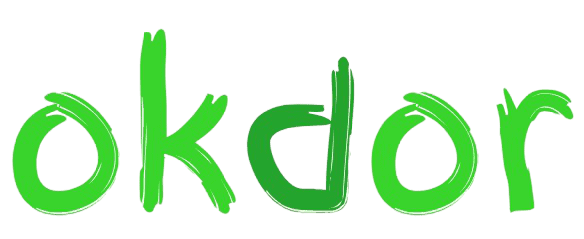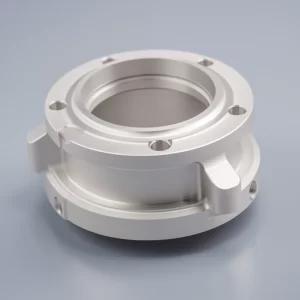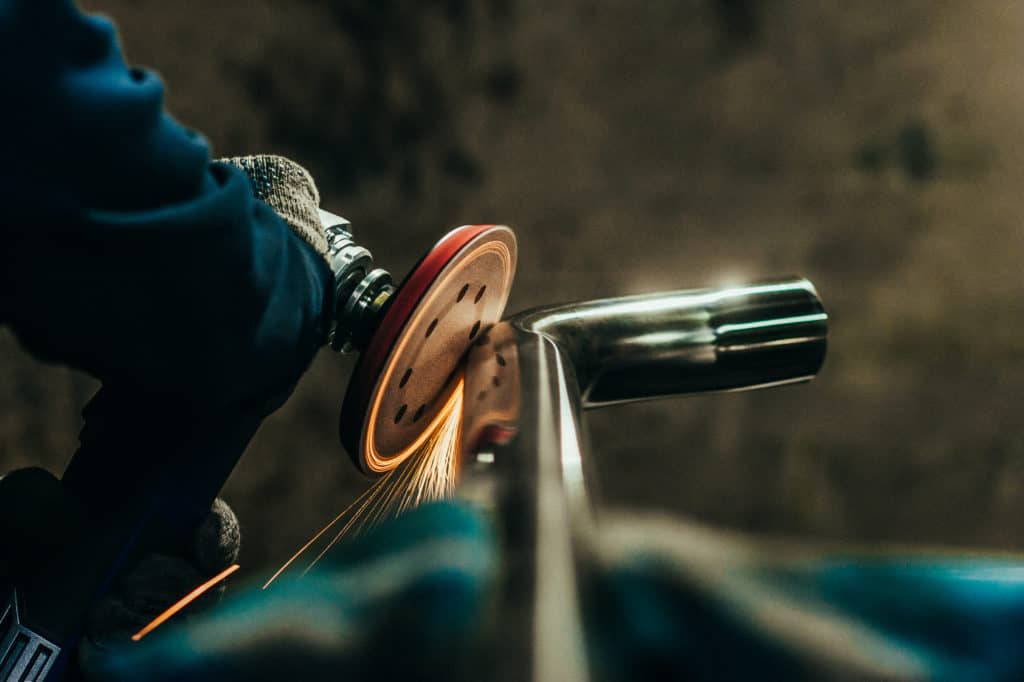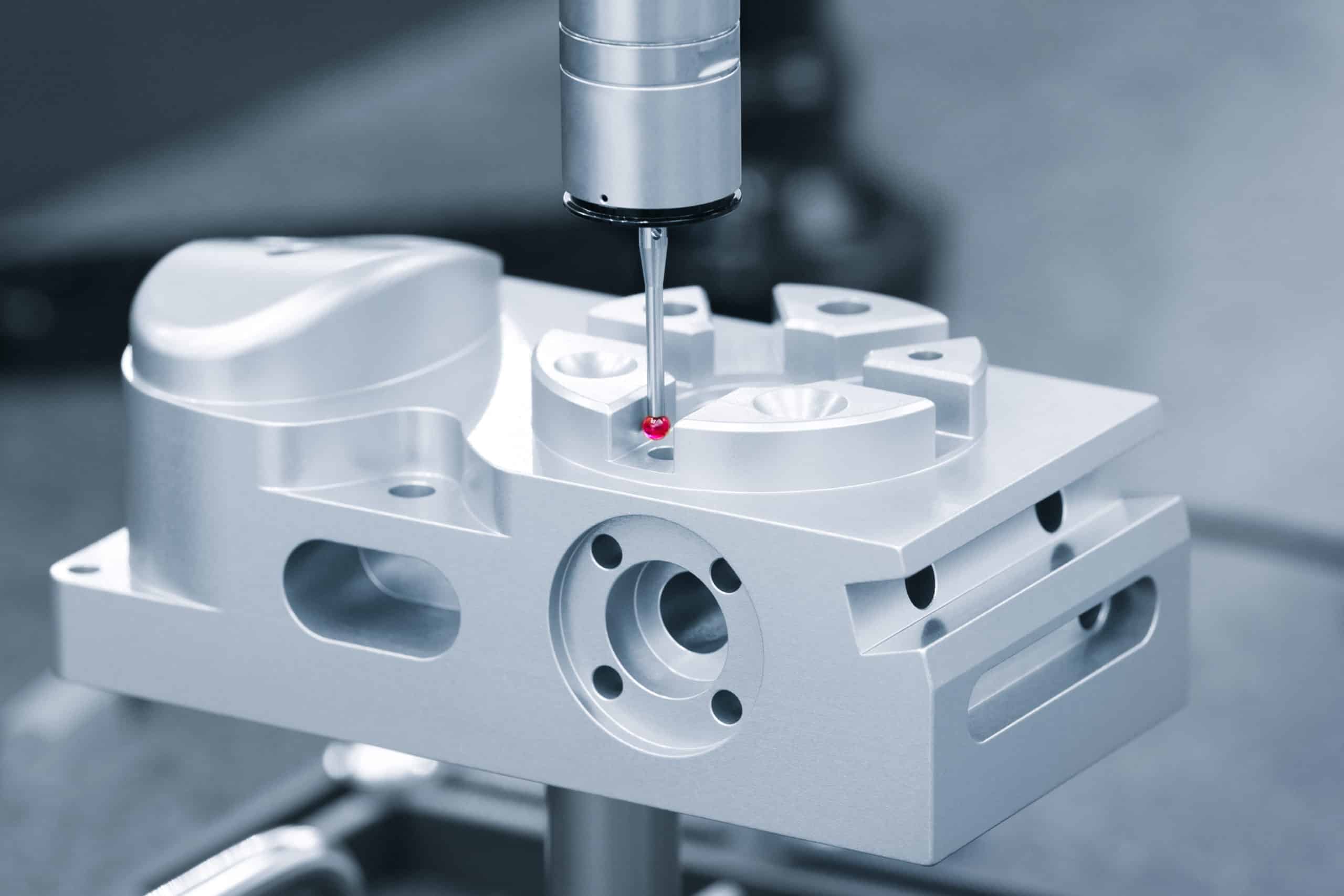Designing sheet metal parts that actually get manufactured affordably requires understanding fabrication constraints before you finalize geometry. With experience across aerospace, audio, and medical sectors, small design adjustments often prevent costly redesigns and production delays.
Designing sheet metal parts that actually get manufactured affordably requires understanding fabrication constraints before you finalize geometry. With experience across aerospace, audio, and medical sectors, small design adjustments often prevent costly redesigns and production delays.
Learn design rules to prevent costly sheet metal redesigns: material selection, budget-friendly processes, and critical tolerances with real project examples.
Table of Contents
What's the Minimum Bend Radius for Different Materials?
For most sheet metal applications, use a minimum inside bend radius equal to the material thickness. 16-gauge steel (0.060″) requires at least 0.060″ radius, while aluminum can often bend tighter at 0.5x thickness. Going below these minimums causes cracking that scraps your entire part.
We routinely achieve 1x thickness bends on 6061 aluminum and 304 stainless using standard press brake tooling. Cold-rolled steel typically requires 1.5x thickness to prevent springback issues that throw off final dimensions. When parts crack from tight radii, you’re looking at 100% scrap rates and potential tooling damage.
Quick Decision Framework:
- Aluminum (6061, 5052): 0.5x thickness minimum, 1x thickness preferred
- Stainless Steel (304, 316): 1x thickness minimum, 1.5x thickness preferred
- Cold Rolled Steel: 1.5x thickness minimum, 2x thickness preferred
If your design requires tighter radii, consider coin bending (adds $300-600 setup cost), switching to more formable 5052 aluminum, or redesigning with multiple shallow bends. Per ISO 2768, standard bend radii range from 0.5-3.0mm based on material thickness.
Cost Impact: Standard radii use existing tooling ($0 premium). Tight radii require specialized tooling (+$300-600 setup cost) and slower cycle times.
Design Takeaway: Always specify bend radii in your drawings. Use 2x thickness when possible for cost-effective forming that eliminates cracking risk and reduces setup complexity.
Material Thickness Minimum Radius Preferred Radius
6061-T6 Aluminum 0.063″ (16 ga) 0.030″ 0.063″
304 Stainless Steel 0.063″ (16 ga) 0.063″ 0.090″
Cold Rolled Steel 0.075″ (14 ga) 0.075″ 0.125″
5052 Aluminum 0.050″ (18 ga) 0.040″ 0.050″
How Do I Choose Between Stainless Steel and Aluminum?
Choose aluminum for lightweight applications requiring good corrosion resistance and excellent formability. Select stainless steel when you need superior strength, temperature resistance above 300°F, or harsh environment durability. Aluminum weighs 65% less than stainless steel (2.7 g/cm³ vs 7.8 g/cm³) but offers lower strength.
We’ve fabricated thousands of parts in both materials across aerospace, audio, and medical applications. 6061-T6 aluminum offers 310 MPa tensile strength with excellent bendability, while 304 stainless provides 580-1180 MPa but requires specialized tooling for tight bends and slower forming speeds.
Performance in Real Environments: Aluminum with anodizing survives 10+ years in outdoor applications, while stainless maintains appearance indefinitely in marine environments. For welding, aluminum requires TIG equipment and inert gas backing, while stainless welds easily with standard MIG or TIG processes.
Decision Framework:
- Choose Aluminum if: Weight critical, anodized finish desired, indoor/mild outdoor use, budget-conscious
- Choose Stainless if: Chemical exposure, food contact, high strength required, maintenance-free longevity
roperty 6061-T6 Aluminum 304 Stainless Steel
Tensile Strength 310 MPa 580–1180 MPa
Density 2.7 g/cm³ 7.8 g/cm³
Thermal Conductivity 170 W/m-K 16 W/m-K
Max Operating Temp 170°C 710°C
Per ASTM standards, both materials meet structural requirements, but stainless offers superior fatigue resistance under cyclic loading conditions.
Design Takeaway: Start with aluminum unless your application specifically demands stainless steel’s unique properties. Consider welding requirements and finishing needs during material selection.
What Thickness Do I Need for This Load/Application?
For structural applications, start with 14-gauge (0.075″) steel or 12-gauge (0.105″) aluminum as baseline thicknesses. Electronic enclosures typically use 16-gauge (0.060″), while heavy-duty brackets require 11-gauge (0.120″) or thicker. Thickness selection directly affects both load capacity and forming constraints.
We’ve tested sheet metal components from 20-gauge housings to 3/16″ structural plates across various loading conditions. Each gauge step increases load capacity significantly, but also affects minimum bend radius requirements – thicker materials need proportionally larger radii to prevent cracking.
Load Capacity Guidelines: Real-world load capacity depends on span length, support conditions, and loading type. For preliminary sizing, thicker gauges provide exponentially more strength – doubling thickness roughly quadruples load capacity for most beam configurations.
Safety Factors by Application:
- Consumer electronics: 2x safety factor
- Industrial equipment: 3x safety factor
- Aerospace/medical: 4x safety factor
Application Guidelines:
- Light Electronics: 18-20 gauge (0.040-0.048″) for weight-sensitive housings
- Standard Enclosures: 16 gauge (0.060″) for general protection and rigidity
- Structural Brackets: 14 gauge (0.075″) for moderate load-bearing applications
- Heavy-Duty Applications: 12 gauge (0.105″) or thicker for high-stress environments
Thickness Impact on Forming: Thicker gauges require proportionally larger bend radii – 14-gauge steel needs 0.075″ minimum radius vs 0.060″ for 16-gauge. This affects design geometry and tooling requirements.
Design Takeaway: Use structural engineering calculations for critical loads rather than rules of thumb. Over-engineering by one gauge is cheaper than field failures, but avoid excessive thickness that complicates forming and increases costs unnecessarily.
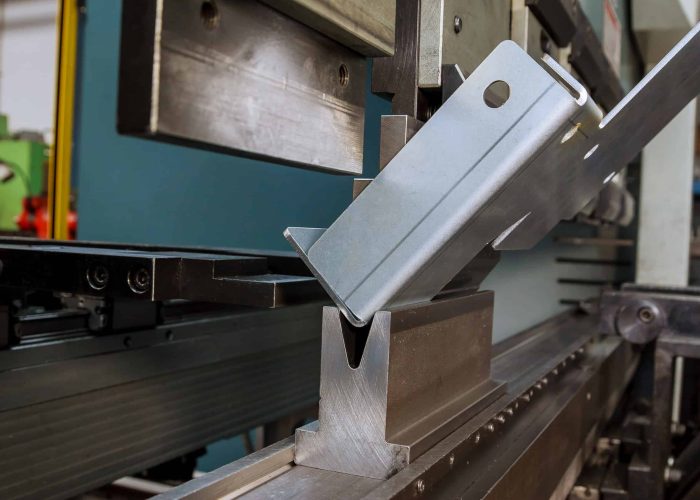
What Tolerances Can Sheet Metal Fabrication Hold?
Sheet metal fabrication typically holds ±0.005″ (±0.13mm) on laser-cut features and ±1° on bend angles. Formed features like bends can achieve ±0.010″ (±0.25mm) on flange dimensions, while punched holes maintain ±0.003″ (±0.08mm). Tighter tolerances require secondary operations and increase costs significantly.
We routinely achieve these tolerances across thousands of parts using calibrated press brakes and laser cutting systems. Bend radius tolerances are typically ±0.25mm for precision parts, with larger parts or thicker materials requiring looser tolerances. Critical dimensions often need CMM inspection to verify accuracy, especially on complex geometries with multiple bends.
Quick Tolerance Selection Guide:
Feature Type Standard Tolerance When to Use Tight Tolerance When Required
Laser Cut Edges ±0.005″ General features ±0.002″ Assembly interfaces
Punched Holes ±0.003″ Standard fasteners ±0.002″ Precision pins
Bend Angles ±1° Functional bends ±0.5° Aesthetic/fit critical
Flange Dimensions ±0.010″ Most applications ±0.005″ Mating surfaces
What to Actually Specify on Drawings:
- Hole patterns for assembly: ±0.005″ for precise mating, ±0.010″ for standard fasteners
- Bend angles: ±1° sufficient for most applications, specify tighter only for visible surfaces
- Overall dimensions: Use ISO 2768-m general tolerances unless function demands tighter
- Mating surfaces: ±0.005″ where parts interface, standard tolerance elsewhere
Multi-Part Assembly Strategy: Control the most critical dimension tightly, then tolerance mating features to accommodate stack-up. For enclosure halves, hold one flange precisely and allow looser tolerance on the mating flange for assembly clearance.
Per ISO 2768-m standards, general tolerances help minimize inspection complexity while maintaining design intent. This approach reduces manufacturing costs while ensuring functionality.
Design Takeaway: Specify tight tolerances only on functional features like hole patterns and mating surfaces. Reserve ±0.005″ for assembly-critical dimensions, use ±0.010″ for general forming, and apply ISO 2768-m elsewhere to control costs.
How Close Can Holes Be to Bend Lines?
Maintain minimum 3x material thickness distance between hole edges and bend lines to prevent distortion. For 16-gauge steel (0.060″), keep holes at least 0.180″ from bend centerlines. Closer spacing risks hole deformation, cracking, or dimensional inaccuracy during forming.
We’ve seen countless parts fail when holes are placed too close to bends – the metal stretches unevenly, creating oval holes or stress concentrations that lead to cracking. The distance between bend lines and features like countersinks should be kept to a minimum of 3 times the material thickness, and 4 times the material thickness from an edge.
Minimum Distance Quick Reference:
Material Gauge Thickness Standard Holes Large Holes (>0.5″) From Edge
16 ga 0.060″ 0.180″ 0.240″ 0.240″
14 ga 0.075″ 0.225″ 0.300″ 0.300″
12 ga 0.105″ 0.315″ 0.420″ 0.420″
Hole Size Impact on Spacing:
- Small holes (<0.250″): Standard 3x thickness rule applies
- Large holes (>0.500″): Increase to 4x thickness due to greater material disruption
- Slots/elongated features: Use 4x thickness minimum – slots concentrate stress more than round holes
- Countersinks/chamfers: Add extra clearance to account for edge preparation
When Design Requires Closer Spacing – 3 Solutions:
Option 1 – Form First, Drill Second: Form all bends, then drill holes. Eliminates distortion but requires secondary operations. Best for precision assemblies requiring tight hole positioning.
Option 2 – Relief Slots: Cut narrow slots (0.030″ wide) between holes and bend lines to isolate stress. Maintains single-operation efficiency with minimal design impact.
Option 3 – Redesign Geometry: Move bends away from critical hole patterns or use multiple smaller bends instead of single sharp bends. Often the most cost-effective solution.
Design Takeaway: Plan hole locations during initial layout, considering both flat pattern efficiency and post-forming requirements. When spacing conflicts arise, evaluate design modifications before adding secondary operations.
When to Use Punching vs Laser Cutting?
Use punching for holes smaller than 0.5″ in high quantities (>100 pieces), and laser cutting for complex shapes, large holes, or low-volume runs. Punching offers faster cycle times and lower per-part costs in production, while laser cutting provides greater flexibility and superior edge quality for prototypes and custom geometries.
We’ve processed millions of holes using both methods across aerospace, medical, and audio applications. Punching makes holes faster than lasers – production speed can reach 1,000 hits per minute on modern servo-electric machines. The break-even point typically occurs around 50-100 parts depending on hole complexity.
Quick Decision Matrix:
- <20 holes + <50 parts = Use laser cutting
- >50 holes + >100 parts = Use punching
- Mixed geometry needs = Consider hybrid approach
Real Cost Comparison:
- 100 parts, 20 holes each: Laser ~$420 total vs Punching ~$180 total
- Setup costs: Punching $200-500 for dies vs Laser $0
Process Trade-offs: Punching maximum thickness is ¼”, while laser cutters can process up to 1″ thickness. Punching creates slight burrs requiring deburring, while laser cutting produces clean edges with minimal heat-affected zones.
Hybrid Strategy: Many fabricators use combination machines that punch standard holes quickly, then laser cut complex shapes in the same setup – ideal for parts with mixed requirements.
Design Takeaway: Standardize hole sizes to common punch dimensions (0.125″, 0.250″, 0.375″) when planning higher volumes. For prototypes or complex shapes, laser cutting offers flexibility without tooling investment.
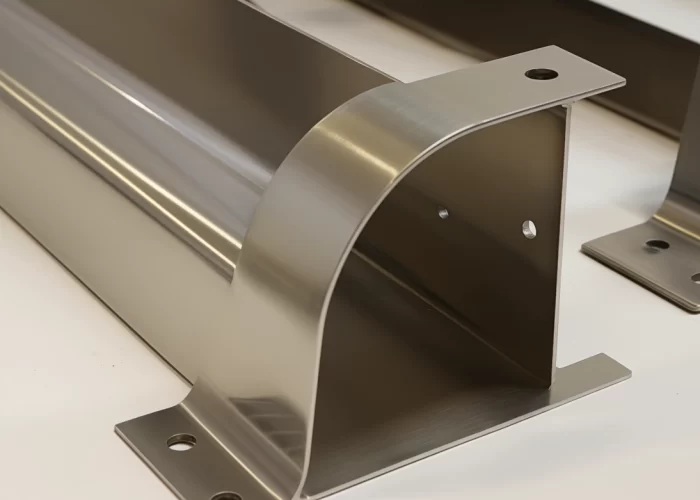
How to Reduce Sheet Metal Fabrication Costs?
Reduce costs by standardizing bend radii, minimizing setups, and designing for standard tooling. Use consistent material thickness throughout designs, specify standard hole sizes, and group similar operations together – these changes typically reduce fabrication costs by 20-40%.
We’ve optimized thousands of parts for cost reduction across medical, aerospace, and audio industries. Common DFM redesigns include increasing bend radii from 0.5mm to 2mm, moving holes 8mm away from bend lines, and relaxing tolerances – typically reducing costs 15-25%.
Priority Cost Reduction Actions:
Priority 1 – Standardize Radii: Use 0.030″ radius for materials up to 0.125″ thick to eliminate custom tooling. Saves: $300-500 per setup
Priority 2 – Optimize Nesting: Design for standard sheet sizes (48″ x 96″). Poor nesting wastes 15-30% of material costs. Saves: 15-20% material cost
Priority 3 – Reduce Part Count: Part count reduction helps reduce costs, simplifies assembly and increases strength. Saves: $X per eliminated part
Volume-Specific Strategies:
- 1-25 pieces: Focus on laser cutting, simple bends
- 25-500 pieces: Mix punching + laser, optimize for standard tooling
- 500+ pieces: Invest in custom tooling, progressive dies
When DFM Isn’t Possible: Focus on batching similar operations, specifying realistic tolerances, and planning finishing requirements early.
Design Takeaway: Invest 2-3 hours in early DFM review to avoid the 25-60% cost penalties that occur when problems emerge during production. Prevention costs less than correction.
Conclusion
Successful sheet metal design balances manufacturability with functionality through early DFM planning. Standardize bend radii, optimize hole placement, and choose appropriate processes based on volume requirements to reduce costs by 20-40%. Contact us to explore manufacturing solutions tailored to your sheet metal product requirements.
Frequently Asked Questions
Avoid holes on bend lines unless absolutely necessary. If required, use specialized coin bending with custom tooling, expect ±0.015″ positional tolerance, and budget additional setup costs. Alternative solutions include relief slots or redesigning geometry.
Maintain minimum 4x material thickness for flange length. For 16-gauge material (0.060″), use at least 0.240″ flange
Thicker materials require proportionally larger bend radii and longer flanges but offer higher strength. Each gauge step affects minimum bend radius – 14-gauge steel needs 0.075″ radius versus 0.060″ for 16-gauge material.
Minimize warping by avoiding long unsupported spans, using adequate material thickness, and balancing cutouts symmetrically. Consider adding relief slots or shallow ribs for structural rigidity. Post-process stress relief may be needed for critical flatness specifications.
For most sheet metal parts, ±0.010″ is achievable with standard processes. Going tighter than ±0.005″ often requires secondary machining, which increases cost significantly. We recommend tolerancing only critical features tightly and using ISO 2768-m elsewhere for cost efficiency.
6061-T6 aluminum provides the optimal balance for most applications, offering 310 MPa tensile strength with good bendability. For complex forming operations, consider 6061-O (annealed) which forms more easily but requires heat treatment afterward for strength.


